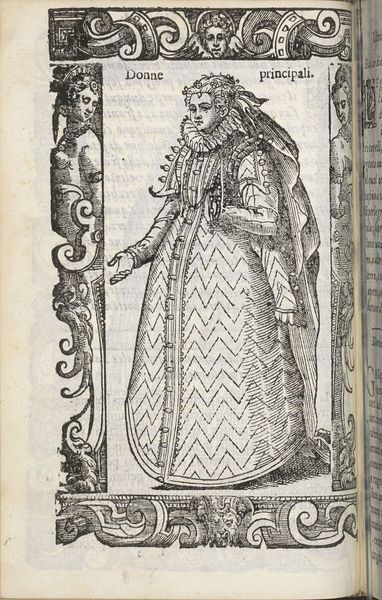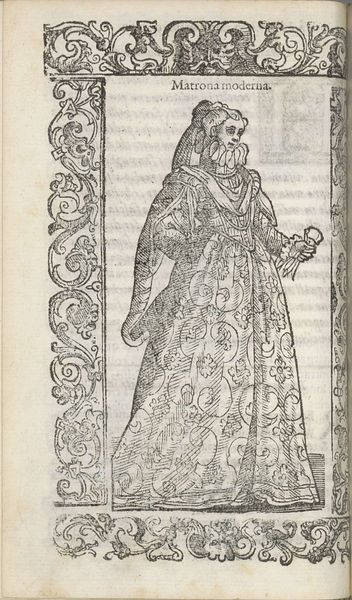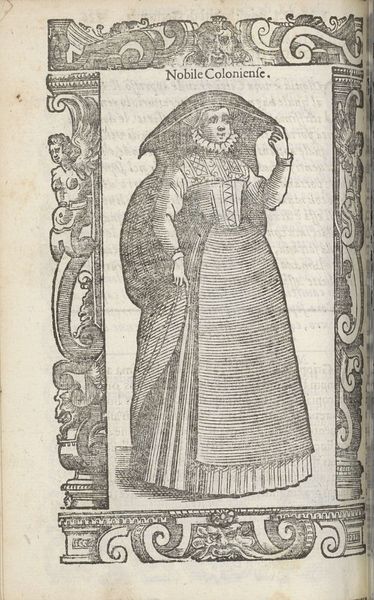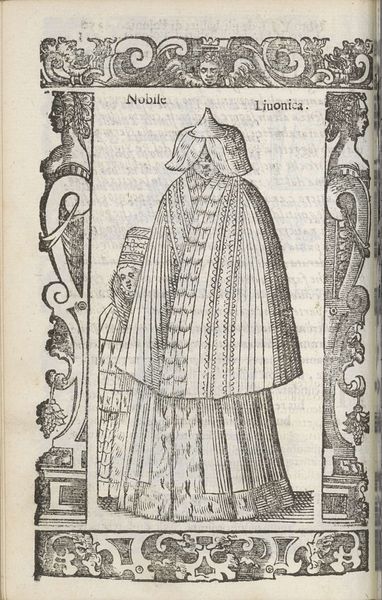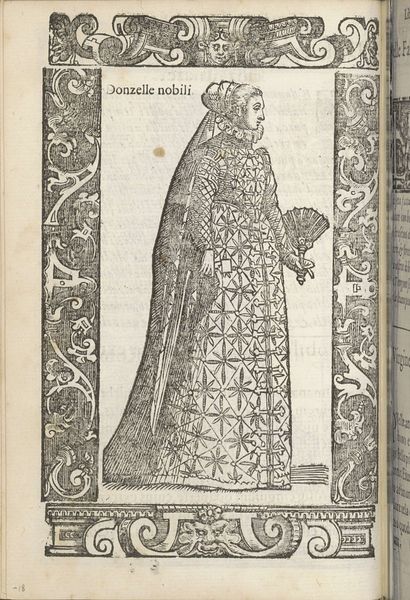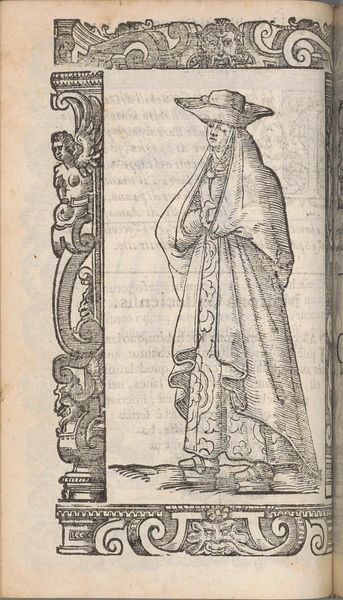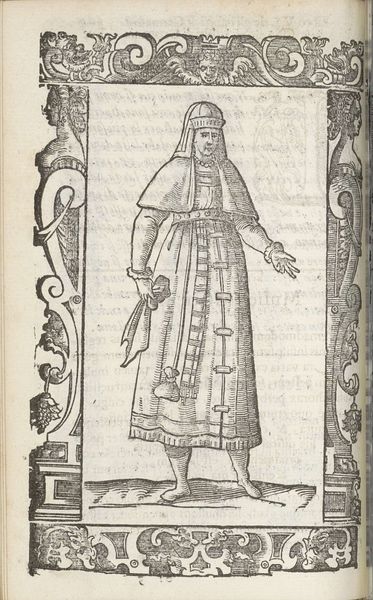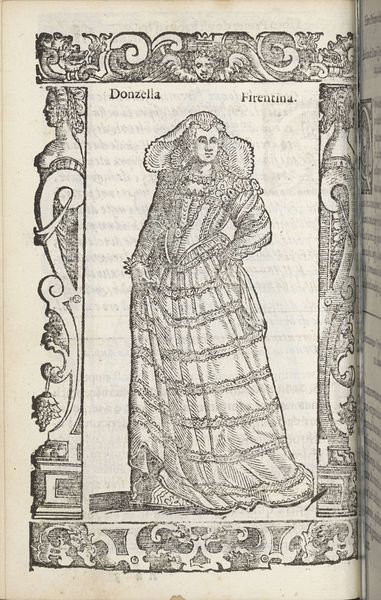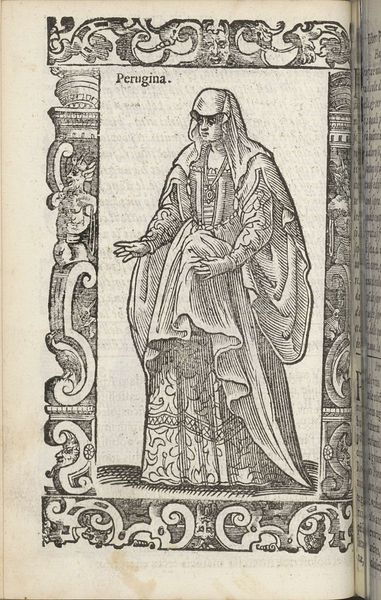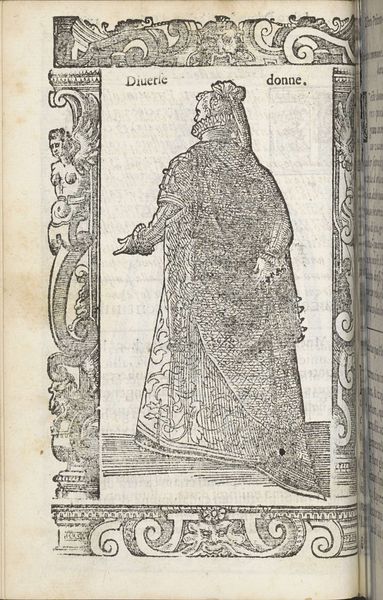
print, engraving
#
portrait
#
medieval
# print
#
history-painting
#
engraving
Dimensions: height 167 mm, width 125 mm
Copyright: Rijks Museum: Open Domain
Curator: "Dogalina antica"—there's a grand name! And yet...she seems oddly detached. Is she indifferent to her legacy, or is that just 1598 for you? Editor: Christoph Krieger's print from 1598 offers a detailed portrayal. This engraving, acting as a historical document, captures the likeness of a Dogalina from antiquity, a Doge's wife from an earlier historical period. Curator: It has that historical stiffness to it, certainly. I feel the patterns and linear precision. And the subject's face reads, to me at least, a little bit apprehensive? Her left hand has that strange gesture – like a soothsayer. Though perhaps "strange" is present-day snobbery. Editor: No, that's very astute! The line work has a curious effect on the emotional delivery. Look closer and consider Krieger's engraving technique. The parallel hatchings articulate the folds and textures of her robes, while cross-hatching offers an idea of shadow and depth. There’s a compositional formality, balanced with detail. I find it more…noble resignation than simple apprehension. Curator: Resignation...that makes sense to me! Perhaps the pattern in her garment adds to the impression; it feels almost suffocating, visually at least. I want to break her out! Editor: Do you now? Then you’d undo Krieger’s technical and social design. Even the decorative border creates the composition of contained nobility. This echoes the historical record that confines her status in Venetian history! Curator: You always read artworks so cleverly! Okay, well maybe that means my job here is done...the artwork spoke, and now I hear! I can sense it is no piece of propaganda for a new society—nor just olden days either—there’s melancholy in the woman. The picture lets us stare but protects her, even. Editor: Precisely. So, Krieger doesn't just offer a portrait; he’s freezing the grandeur of an ancient institution with incredible care and deliberation. Perhaps offering respect—as an artistic practice—of the very recent past. A lot for a little print, wouldn’t you say?
Comments
No comments
Be the first to comment and join the conversation on the ultimate creative platform.
